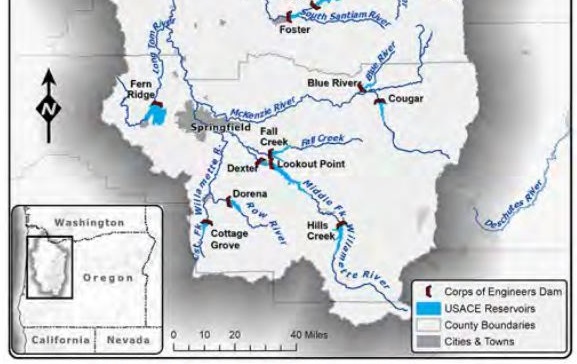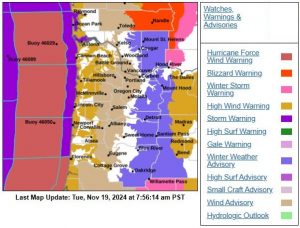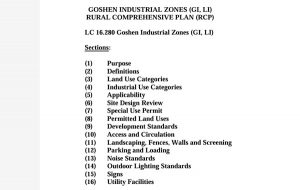Online sessions Dec. 6, Dec. 8 for Willamette dams 30-year plan
3 min read
from The U.S. Army Corps of Engineers
To share information about its proposed 30-year plan for operation and maintenance of 13 Willamette Basin dams and reservoirs, the Corps will be holding two virtual open house meetings this week:
- Tuesday, Dec. 6, 5:30-6:30 p.m.
- Thursday, Dec. 8, noon to 1 p.m.
Join by WebEx or phone using the following information:
Login link: https://usace1.webex.com/meet/WVS-DEIS_PublicMeeting
U.S. Toll Free: 1-844-800-2712
Access Code: 1998 06 7062
The plan, referred to as a Draft Programmatic Environmental Impact Statement, details seven potential courses of action—including one most preferred by the Corps—and essentially lays out a long-term path for achieving the congressionally-authorized purposes of the Corps’ Willamette Valley System while improving conditions for endangered fish.
The document outlines changes the Corps can make to accommodate newer environmental conditions—most notably, the Endangered Species Act listing of Upper Willamette River Chinook salmon and steelhead—that have risen since the Corps’ last Willamette Valley EIS in 1980.
Each of the Corps’ seven alternatives proposes a separate approach to managing the system at various dam sites by employing operational measures, like lowering water levels in a reservoir, or structural changes, such as building a temperature control tower to help make water conditions downstream ideal for fish (or a combination of the two). Ultimately, the alternatives explore slightly different ways the Corps can satisfy the purposes of the system while also improving fish passage and water quality, the primary determinants of fish survival across the basin.
“The critical water that we manage with this system touches so many different needs and so many different people within our communities across the valley,” said Erik Petersen, the Corps’ Willamette Valley operations project manager. “And this document will determine our course in managing that system and appropriately meeting all those needs for the next 30 plus years. It’s a very big deal, so hearing from as many members of the public as possible is critical to the decision-making process.”
Public feedback is being accepted through Jan. 19.
The Corps is currently welcoming feedback from the public via comments submitted by email to willamette.eis@usace.army.mil or in writing to the following address:
U.S. Army Corps of Engineers
Attn: CENWP-PME-E / Willamette EIS
P.O. Box 2946
Portland, OR 97208-2946
In-person public meetings will also be held in the weeks ahead:
- Monday, Jan. 9, 6-8 p.m. – Springfield
- Tuesday, Jan. 10, 12:30-2:30 p.m. – Eugene
- Wednesday, Jan. 11, 6-8 p.m. – Sweet Home
- Thursday, Jan. 12, noon to 2 p.m. – Stayton
Exact venues for the face-to-face meetings are still being arranged, and as soon as they are set will be added to the Corps EIS webpage.
Following the 55-day public comment period ending Jan. 19, the Corps will enter a review period and then respond to comments in its final EIS in late summer 2024. The final EIS will also provide the analysis upon which the Corps will make its decision.
For more information, and to view and download the draft EIS, visit https://www.nwp.usace.army.mil/Locations/Willamette-Valley/System-Evaluation-EIS/.
The Corps operates and maintains 13 multipurpose dams, reservoirs, and hatchery programs across Oregon’s Willamette River Basin, started in 1940 and completed in 1969. Each dam contributes to a water resource management system that provides flood risk management, hydropower, water quality improvement, irrigation, fish and wildlife habitat, and recreation for the Willamette River and many of its tributaries.
This includes an estimated savings to the region of more than $900 million annually in averted flood damages. The Willamette Valley System also comprises eight Corps-owned hydropower dams, which can provide enough power to service nearly 300,000 homes (500 megawatts). In addition, the Corps manages more than 50 developed recreation sites across the valley.






